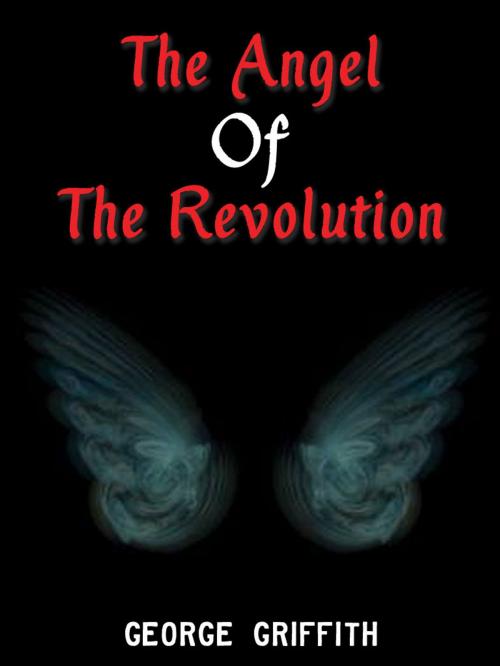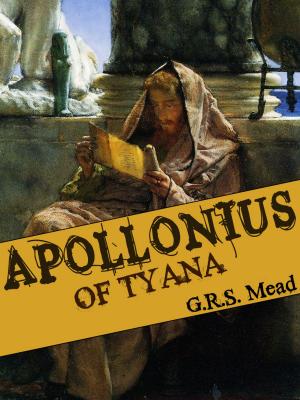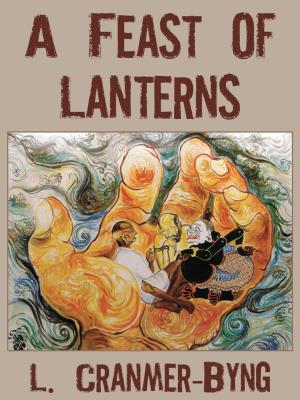| Author: | George Griffith | ISBN: | 1230000246778 |
| Publisher: | AppsPublisher | Publication: | June 16, 2014 |
| Imprint: | Language: | English |
| Author: | George Griffith |
| ISBN: | 1230000246778 |
| Publisher: | AppsPublisher |
| Publication: | June 16, 2014 |
| Imprint: | |
| Language: | English |
The Angel Of The Revolution
by George Griffith
The Angel of the Revolution is a fantastical tale of air warfare in which an intrepid group of Socialists, Anarchists and Nihilists defeat Capitalism with their superior knowledge of dirigibles. Led by a crippled, briliant Russian Jew and his daughter, Natasha, The Brotherhood of Freedom establishes a ‘pax aeronautica’ over the world, thanks to the expertise of Richard Arnold, a young scientist. Arnold falls in love with Natasha (the eponymous Angel), and Griffith builds a utopian vision of Socialism and romance.
As well as writing a cracking good story, Griffith is also remarkably prescient in predicting future technology, including air travel, tidal power, and solar energy. He also engages with timeless debates over social responsibility. Griffith imagines a world in which the wealth of the obscenely rich is sequestered, their property seized for the public good, and their businesses nationalised. Those with unearned incomes are forced to either pay punitive tax, or to undertake equivalent labour in the community. Griffith’s message lacks subtlety, but it couldn’t be more pertinent in the twenty-first century.
About The Author :-
George Griffith (1857–1906), full name George Chetwyn Griffith-Jones, was a prolific British science fiction writer and noted explorer who wrote during the late Victorian and Edwardian age. Many of his visionary tales appeared in magazines such as Pearson's Magazine and Pearson's Weekly before being published as novels. Griffith was extremely popular in the United Kingdom, though he failed to find similar acclaim in the United States, in part due to his revolutionary and socialist views. A journalist, rather than scientist, by background, what his stories lack in scientific rigour and literary grace they make up for in sheer exuberance of execution.
He was the son of a vicar who became a school master in his mid-twenties. After writing freelance articles in his spare time, he joined a newspaper for a short spell, then authored a series of secular pamphlets including Ananias, The Atheist's God: For the Attention of Charles Bradlaugh. After the success of Admiral Philip H. Colomb's The Great War of 1892 (itself a version of the more famous The Battle of Dorking), Griffith, then on the staff of Pearson's Magazine as a clerk addressing envelopes and mailing labels, submitted a synopsis for a story entitled The Angel of the Revolution. It remains his best and most famous work. It was among the first of the so-called marvel tales, epitomised by Jules Verne. Marvel tales featured such things as heavier than air flying machines, compressed air guns, submarines, profoundly convenient political developments, wooden heroes with no readily apparent sexual tastes, and spectacular aerial combat along with other forms of combat, such as battle under the sea. Later novels, such as ' The Gold Finder' developed the heroes' romantic interests. His short stories were very similar to the future war tales of George Chesney and his imitators along with the political utopianism of William Morris's News from Nowhere. He wrote a sequel, serialised as The Syren of the Skies in Pearson's Magazine. It was later published as a novel titled with the name of its main character, Olga Romanoff.
The Angel Of The Revolution
by George Griffith
The Angel of the Revolution is a fantastical tale of air warfare in which an intrepid group of Socialists, Anarchists and Nihilists defeat Capitalism with their superior knowledge of dirigibles. Led by a crippled, briliant Russian Jew and his daughter, Natasha, The Brotherhood of Freedom establishes a ‘pax aeronautica’ over the world, thanks to the expertise of Richard Arnold, a young scientist. Arnold falls in love with Natasha (the eponymous Angel), and Griffith builds a utopian vision of Socialism and romance.
As well as writing a cracking good story, Griffith is also remarkably prescient in predicting future technology, including air travel, tidal power, and solar energy. He also engages with timeless debates over social responsibility. Griffith imagines a world in which the wealth of the obscenely rich is sequestered, their property seized for the public good, and their businesses nationalised. Those with unearned incomes are forced to either pay punitive tax, or to undertake equivalent labour in the community. Griffith’s message lacks subtlety, but it couldn’t be more pertinent in the twenty-first century.
About The Author :-
George Griffith (1857–1906), full name George Chetwyn Griffith-Jones, was a prolific British science fiction writer and noted explorer who wrote during the late Victorian and Edwardian age. Many of his visionary tales appeared in magazines such as Pearson's Magazine and Pearson's Weekly before being published as novels. Griffith was extremely popular in the United Kingdom, though he failed to find similar acclaim in the United States, in part due to his revolutionary and socialist views. A journalist, rather than scientist, by background, what his stories lack in scientific rigour and literary grace they make up for in sheer exuberance of execution.
He was the son of a vicar who became a school master in his mid-twenties. After writing freelance articles in his spare time, he joined a newspaper for a short spell, then authored a series of secular pamphlets including Ananias, The Atheist's God: For the Attention of Charles Bradlaugh. After the success of Admiral Philip H. Colomb's The Great War of 1892 (itself a version of the more famous The Battle of Dorking), Griffith, then on the staff of Pearson's Magazine as a clerk addressing envelopes and mailing labels, submitted a synopsis for a story entitled The Angel of the Revolution. It remains his best and most famous work. It was among the first of the so-called marvel tales, epitomised by Jules Verne. Marvel tales featured such things as heavier than air flying machines, compressed air guns, submarines, profoundly convenient political developments, wooden heroes with no readily apparent sexual tastes, and spectacular aerial combat along with other forms of combat, such as battle under the sea. Later novels, such as ' The Gold Finder' developed the heroes' romantic interests. His short stories were very similar to the future war tales of George Chesney and his imitators along with the political utopianism of William Morris's News from Nowhere. He wrote a sequel, serialised as The Syren of the Skies in Pearson's Magazine. It was later published as a novel titled with the name of its main character, Olga Romanoff.















